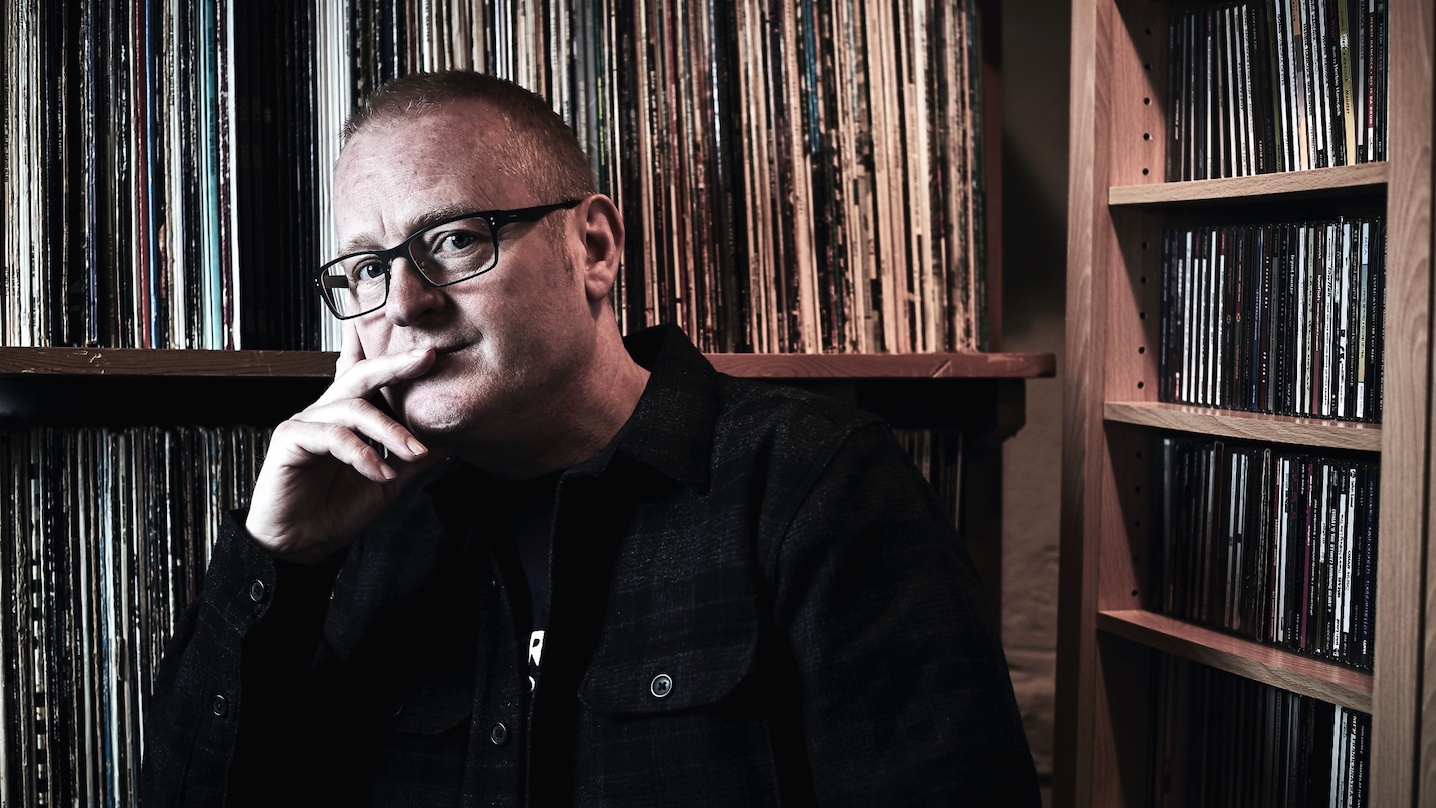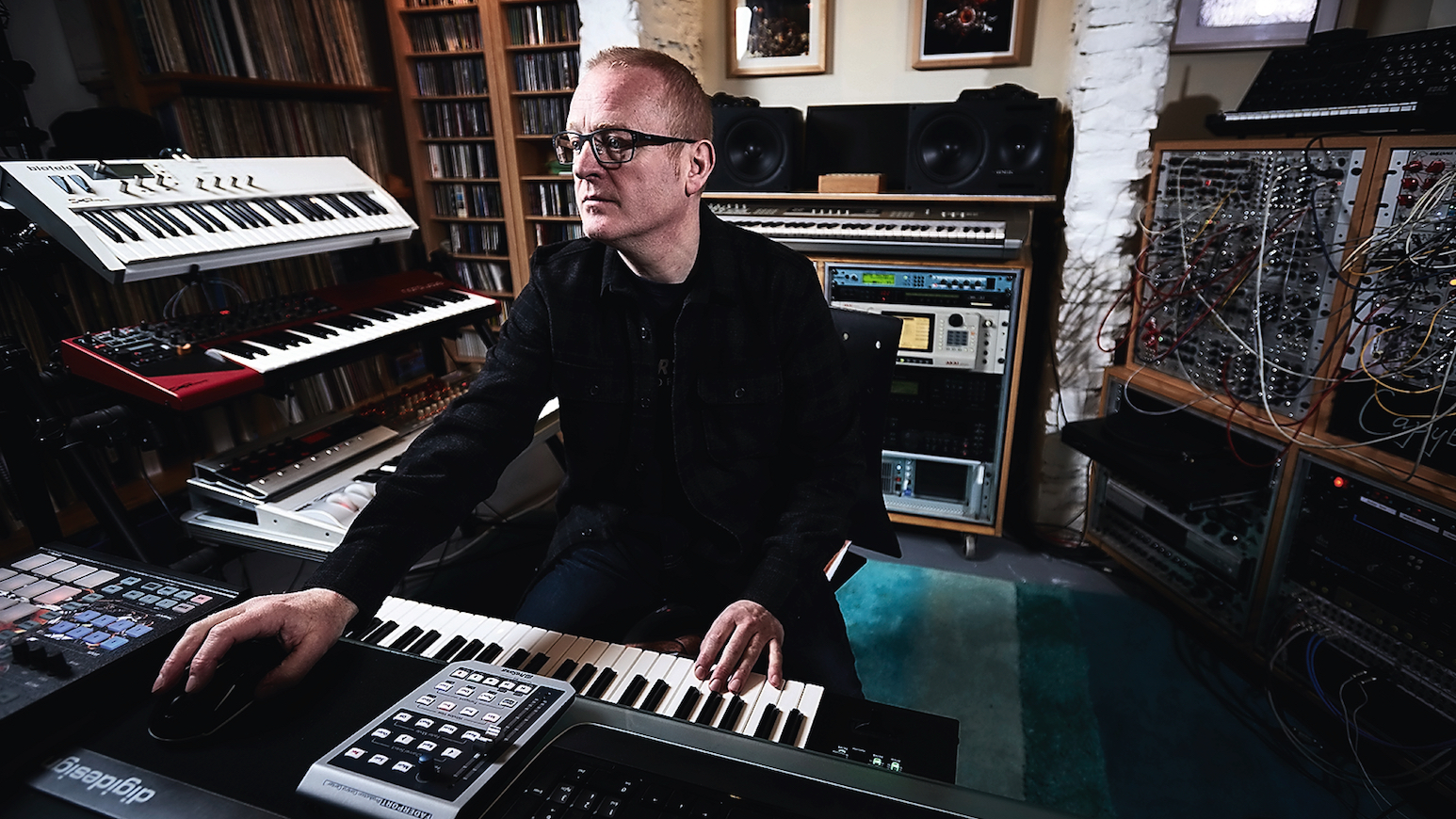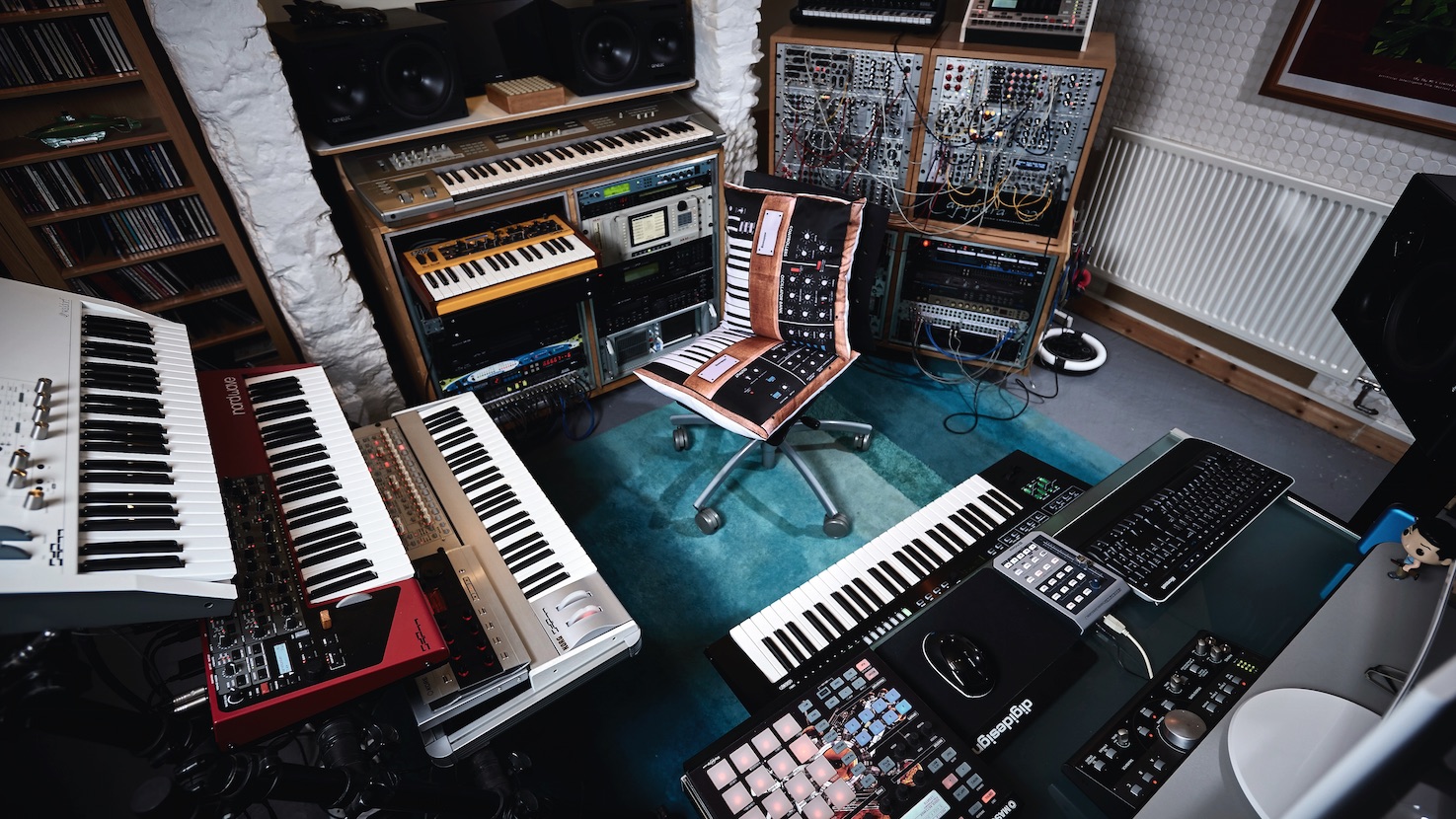Bola discusses the changing face of music technology and faking an analogue sound
After a ten-year absence, Darrell Fitton is back with a new album on Skam Records

The work of electronic musician Darrell Fitton is likely to be categorised as one of your record collection’s best-kept secrets. Initial Fitton tracks, described as “chrome-dipped melodic techno”, began appearing in 1995 on Warp Records’ Artificial Intelligence compilations, while subsequent material, recorded as Bola, had a more ambient, post-techno feel.
Fitton’s debut album release, Soup, found its home on Andy Maddocks' underground label, Skam. In fact, it was one of the Manchester label’s first releases, alongside Boards of Canada’s Music Has the Right to Children. Around the same time, Fitton loaned his studio to Rob Brown and Sean Booth, two kids who would later become one of electronic music’s foremost innovators, Autechre.
Fitton continued to release expansive soulful electronica under the name Bola, and occasionally Jello, throughout the 2000s. However, after the release of Kroungrine in 2007, he was rumoured to have left the music industry. Although Fitton subsequently returned to play live dates, ten years of relative inactivity have now been broken by the sudden release of his sixth Bola album, D.E.G.
Apparently you loaned Autechre some equipment prior to them making their debut album…
“Many years ago I had a studio with an old AMEK desk and an Atari 8-track. These two kids came and started talking to me about synths because they knew I was into them. Those guys were Autechre, but it was before they became Autechre. I think Sean [Booth] was about 15 at the time. They played me some of their cassette tracks and I thought they were really good, so I said they could use my studio when I’m not in it. They did a few overnighters [laughs]. Basically, that was the beginning of Lego Feet, as they were called at the time. You could see that something good was going to happen – they were really intense.”
After the last Bola album, it was rumoured you’d left the industry. Had you? And what brings you back?
"I had two really young children, so we decided to evacuate the city, move into the countryside, and concentrate on bringing the kids up. I hadn’t fallen out with music, but I’d become jaded and needed some time to think about whether I wanted to do this anymore. I’ve kept all the gear and over the years added to it… and I’ve become interested again. I guess I’ve got my mojo back a bit!”
Want all the hottest music and gear news, reviews, deals, features and more, direct to your inbox? Sign up here.
When you say jaded, do you mean by the direction the industry went in?
“That had something to do with it, but I was also jaded with the sound I was making. At the time, when I went into the studio I didn’t feel like I was moving forward. I’ve always been driven by that and never been particularly concerned about being rich or famous. I’m more interested in personal musical fulfilment, and at that point it definitely felt a little bit grey.”
Technology’s changed enormously over that time – what was it like waking back up and discovering the frills of the modern studio?
“Gear-wise, things have definitely changed dramatically. When I did the last album, VSTs were… not in their infancy but… they weren’t that well developed. Nowadays they’re incredible, and the audio processing is through the roof really. I use a lot of physical equipment rather than software, and I feel that’s moved on too. Sonically, there’s more precision now. I remember having an original Nord G1, but I’ve got a Wave now and it’s much more precise, which makes me more interested in making music.”
In what way is it much more precise? In the way that it has a wider range of parameters?
“Yeah, and it’s much quicker – you’re not having to think of workarounds so much, and you can do what you’ve got in your head more directly. I think that’s a lot to do with the fact that a lot of synths now have control panels again. You can put your hands on them without menu surfing, which can drive you crazy. Some of my favourite synths of all time have been quite menu-driven, I remember having a Kurzweil K2000, and I really liked it, but it took a lot of learning.”

You recently managed to get your hands on the new Roland System-8…
“I only got it a few weeks ago. Previous to that I had the System-1, which was fantastic. An awful lot of sounds from D.E.G. are from the System-1 because it’s so quick to get to the things I had in mind. So when the System-8 was announced, I thought, ‘I’ll have one of them’. It has plug-outs, which are like plugins but you can upload them to the System-8. They do an SH-101, which is absolutely exact because I used to have one, and an SH-2. You just press a button and it’s that synth. For playing live, that’s exactly the kind of thing I need to duplicate things exactly as they are in the studio.”
We touched on Autechre, whose sound is quite cold and clinical, whereas you’ve always had a warmer, more atmospheric sound, which is typified on this new album.
“I guess that’s just me. I don’t listen to electronic music at all really, I listen to rubbish like Ravel and Debussy and loads of Jazz, so that influences me melodically and makes the sound more atmospheric. Autechre are city boys, so they’re driven by that urban mentality, whereas I’ve always been a bit rural [laughs].”
What’s the significance of the abbreviated title D.E.G?
“I always do these crazy puns. My name’s Darrell Earnest Fitton, so when we originally said we were going to do this album I said to Skam that this is probably going to be the end of Bola… so it’ll be Darrell Earnest is Gone – D.E.G.”
Let’s hope it’s not the end. The opening track, Fhorth, is very sci-fi and has a deep analogue richness. Was it made with analogue gear?
“Yes and no. I’m not a massive analogue fanboy. I’ve had everything over the years because I’ve been making records since the ’80s. Over the years, I’ve had Jupiter-8s, Prophet-5s, PolySixs and Minimoogs… you name it, I’ve had them all. These days I don’t have anything that’s truly analogue except my modular. So yes, there’s quite a lot of modular sampling going on where I’ll make a sound, sample it and play it polyphonically. It’s not as analogue as people think it is – that’s a lot to do with how I process things to make them sound more natural rather than clinical.”
My debut album Soup is widely regarded as analogue-sounding, but an awful lot of that was the DX7!
So what’s the secret to using digital effects in order to get that more expansive analogue sound?
“A lot of it is layering, so combining things together, but also micro-tuning, which can make things sound slightly in or out of tune. You can pan things a little bit left or right to give yourself the correct width and then the dynamic of it will come through. Even with a digital synth, if you do it enough, it starts to sound more analogue because it’s not as flat.
“A lot of people say that a Yamaha DX synth, for instance, is clinical and flat-sounding, but I love the DX. My debut album Soup is widely regarded as analogue-sounding, but an awful lot of that was the DX7!”
So it’s more about how it’s being processed rather than the tools you use to create the source sounds in the first place…
“Absolutely. With analogue synths, a lot of people have a bee in their bonnet about getting the ‘real thing’, or owning a particular piece of gear from the ’80s, but I think you can do similar, if not the same, things with new gear that’s not pure analogue but imitates analogue.”
Do you have themes and concepts in your head when you’re writing this very ethereal music?
“I don’t have this grand scheme, and D.E.G. isn’t a concept album. I might have an idea for something that sounds… song-like… but is not a song. The fourth track on the album, Evensong, sounds like a singer but it’s not a singer, it’s all synthetic. I had this idea of creating something that sounded like a normal song but it’s gobbledegook – even the words are nonsense.”
The studio has just the right degree of home and work to it – what are the plans for it?
“I have a four-story house and there’s a sub ground with a garage at the back where the car goes – I want to turn it into a live room eventually.
“Basically, I want to buy an electronic drum kit again, put that in there and have a vocal booth as well – the next project I’ve got in mind will have a lot of vocals.”

You have a heap of hardware synths. Which of them do you find the most inspiring?
“I have the [Waldorf] Blofeld, which is a wavetable synthesiser. Its ancestor would have been things like the Wolfgang Palm PPG Wave series synths from the ’80s. You’ve got waveforms that are continually variable, and a wavetable starts at a sine wave and ends at something random and there’s thousands in between. The idea is that you can pan along it and it has a very unique character.
“Tangerine Dream did an album called Exit, and it was full of this synthesiser that nobody had heard before called the PPG. It blew my mind; I thought the sounds on it were really different. I always wanted something that did wavetables, so when the ‘Waldorf PPG Wave’ came along I went out and bought it. The filter they designed for it was fantastic. Even now, it still sounds incredible.”
What else do you have?
“I’ve had the Nord Wave for about six or seven years, but I really like the fact that you can put your own samples in the Wave whereas you can’t on the others. Most of the time, modular gear is monophonic and you can’t play chords on them unless you buy a whole bunch of them. So if I come up with an interesting tone that’s variable, I can sample it and have it spread across the Nord’s keyboard and process it to make it sound polyphonic. Under that, I have a Korg Radias, which is a really wacky synth [laughs].
"It’s so Korg – it produces normal sounds, but you can actually feed one layer back into the next one, which is really weird. I’ve also got a Korg Z1, which I’ve had for years. I won’t get rid of it because it’s quite unique and typically Korg. It’s fantastic for pads and textures and you get lots of control.”
And you’ve got yourself a Native Instruments Kore there – do you still get use out of it?
“Kore was the idea Native Instruments had prior to Maschine. Obviously, you have NI Komplete now, but a few years ago, Kore was supposed to unify your sound library. Essentially, you can build layers of virtual instruments and save them as a single instrument, which means you can load up a patch that has combined layers of different synths. I used that quite a lot on the album, especially when I wanted to build a massive pad sound.”
What outboard gear are you currently using?
“Quite a lot of old stuff. The Yamaha FS1R and the TG77 rackmount modules, an old Akai S6000 sampler, which I was using recently until the scuzzy hard drive failed. Finding an old scuzzy hard drive nowadays is a nightmare. I’ve still got a massive Soundcraft Ghost desk, which is a 56-input desk that I’ve had to shove in a cubbyhole under the stairs.
"Everything used to be wired through that, but this is the first album that I haven’t made through a mixing desk, and not having to do that anymore has been a revelation. I’m using MOTU’s 24IO interface with everything wired directly into channel inputs, so if I want a particular synth, I just pick the input and there it is ready to go. It’s a lot quicker because it allows me the opportunity to jump between different songs without having to touch a desk.”
Then you have your modular gear of course, which looks like a very impressive setup.
“It’s all Eurorack, and there’s tons of different stuff in there. I buy whatever I need at the time. The first modular I bought was in 2003, and in those days there were only a couple of manufacturers like Doepfer. Nowadays, there are tons of boutique module makers.
"The positive thing about using these is that you’re not tied down to a specific path, so instead of having a synth that goes oscillator, filter, envelope, whatever, you can literally redirect it any way you please. You can have an oscillator triggering an envelope or one oscillator going into another and another to create mad, crazy FM synthesis. It’s a shame that most people who have them don’t make more music with them.”
Studio One is really neat… I create a track and boom! I’m away. Again, it’s getting away from that menu-surfing thing – it’s all set out on screen in one layer and simple as can be
And you’re using PreSonus Studio One as a software DAW?
“Over the years I’ve used just about everything from Steinberg Pro 24 to C-Lab, Logic and Cubase. But the problem with a lot of those apps is that there’s too much in them. You don’t need that many – you just need a quick way of working. Studio One is really neat… I create a track and boom! I’m away. Again, it’s getting away from that menu-surfing thing – it’s all set out on screen in one layer and simple as can be.”
But you do also use quite an armoury of software…
“Yes, having said that, I do use Native Instruments Maschine and Komplete, Omnisphere 2 and Arturia [V Collection], because the Oberheim SEM module’s really good on that.
“For processing stuff, I really like the Melda set of VST plugins; they’re really quirky and interesting. They do polyrhythmisers, which break up different frequency bands and rhythmise them, but they also make compressors and EQs. Focusrite also does the Red Series, which is phenomenal. I like iZotope as well – its Neutron mixing plugins are really good.”
D.E.G. is out now on Skam Records.


Future Music is the number one magazine for today's producers. Packed with technique and technology we'll help you make great new music. All-access artist interviews, in-depth gear reviews, essential production tutorials and much more. Every marvellous monthly edition features reliable reviews of the latest and greatest hardware and software technology and techniques, unparalleled advice, in-depth interviews, sensational free samples and so much more to improve the experience and outcome of your music-making.
